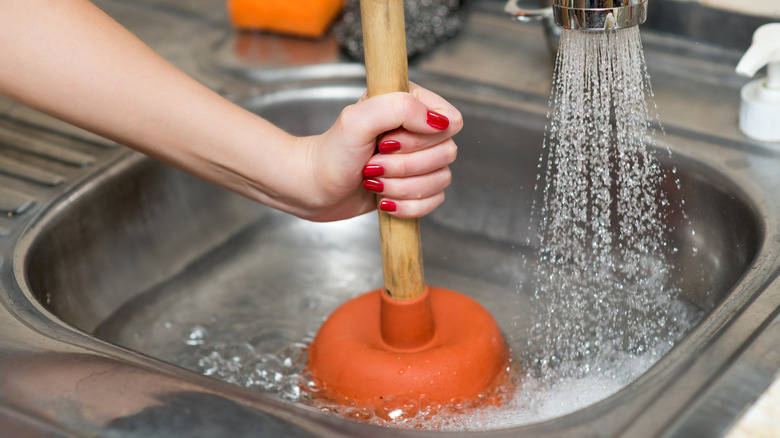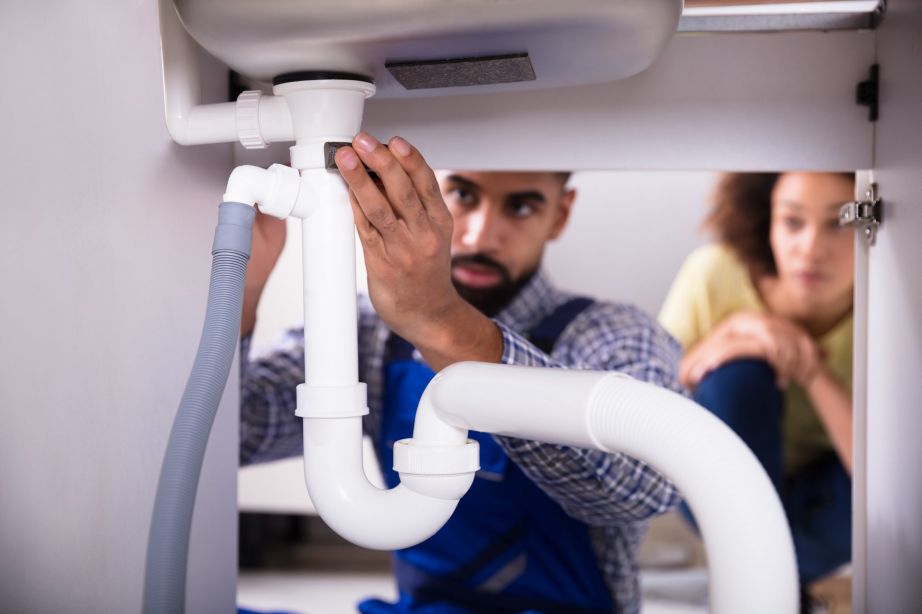Do you find yourself hunting for facts and techniques on How to Fix a Slow Draining Sink?

Intro
We have actually all been there: You're cleaning your teeth or washing your hands, and you discover the water merging in the sink. As opposed to swiftly swirling down the drain, it lingers, transforming your once-refreshing morning regimen into a miniature overload scene. A slow-draining sink isn't just frustrating; it's usually an indicator of bigger plumbing concerns hiding underneath the surface area. The bright side is that most slow-draining sinks can be taken care of with a little expertise, a couple of fundamental devices, and some patience. Ready to tackle this job head-on? Allow's roll up our sleeves and dive right in.
Comprehending the Reasons For a Slow-Draining Sink
Before you start poking around in your pipes, it assists to understand what might be triggering the slowdown. Understanding the root cause makes it much easier to select the right fix.
Common Culprits Behind Slow Drain
So, what's obstructing points up? Normally, it's a mixture of daily debris-- believe hair, soap scum, toothpaste deposit, and remaining food fragments. Gradually, these tiny bits build up and cling to the pipeline walls, slowly tightening the flow and making it harder for water to travel through. In some cases, mineral deposits from tough water can also add to the crud, producing the ideal tornado for stubborn clogs.
When is it Time to Act?
If you observe the water draining pipes slower than common, it's a good concept to intervene faster instead of later on. Waiting as well long could lead to finish obstructions, undesirable odors, or even pipeline damages. If the water takes greater than a couple of secs to remove after switching off the tap, consider it a red flag and prepare to place on your DIY hat.
Tools and Materials You'll Require
The right tools make all the distinction. Luckily, you will not require a completely equipped plumber's van to get the job done.
Vital Tools for Do It Yourself Repairs
A bettor is your go-to beginning factor. A small, sink-sized plunger creates suction that can remove small clogs. For even more relentless obstructions, a drain serpent (often called a plumbing professional's auger) functions marvels. A pair of handwear covers, a flashlight, and perhaps a pair of protective goggles are also handy.
Suggested Cleaning Solutions
Moderate meal soap and warm water can assist break down oily accumulation. A combination of cooking soda and vinegar is a reliable home remedy, and enzymatic cleaners provide an even more eco-friendly method. Maintain chemical drainpipe cleansers as a last hope, as they can be severe on your pipelines.
Security First: Safety Measures and Prep work
Prior to you launch into unclogging setting, think of safety and security. You're dealing with possibly unclean water and debris, so slip on a pair of gloves. If you're using chemical cleansers, ensure the room is well-ventilated and follow the guidelines on the label.
Protective Gear and Work Space Setup
Put down some old towels or rags around the sink location to catch sprinkles. Clear away any things that may get in your means, like soap dispensers or tooth brush owners. Make sure you have excellent lights-- grab a flashlight if required.
Step-by-Step Overview to Taking Care Of a Slow-Draining Sink
Now, allow's get into the nitty-gritty. This detailed process will lead you with straightforward techniques to recover your sink's water drainage.
Action 1: Get Rid Of and Clean the Stopper
Often, the stopper (that little plug you push down to obstruct water) is the initial offender. Remove it meticulously and clean off any type of hair or gunk entraped around its base. Rinse it completely prior to placing it back in position.
Action 2: Make Use Of a Bettor to Dislodge Debris
Got that bettor all set? Setting it over the drainpipe and give it a few company pumps. The idea is to create suction that can loosen up any blockage. If you see bits of debris floating up, you're on the best track.
Step 3: Attempt a Drainpipe Snake or Cord Hanger
If the bettor doesn't do the trick, it's time to highlight the drain serpent. Delicately feed it right into the drainpipe and twist as you go. You may feel some resistance-- that's likely the blockage. Keep twisting and drawing till you get rid of the blockage. If you don't have a drainpipe snake, a corrected wire wall mount can operate in a pinch.
Tip 4: Apply a Do It Yourself Drain Cleanser
An all-natural cleaner made from cooking soft drink and vinegar can break down residual grime. Pour half a cup of cooking soda into the drainpipe, followed by half a mug of vinegar. Let it fizz for around 15 minutes, then flush with warm water. This chemical reaction commonly does marvels for small obstructions.
Tip 5: Rebuild and Examine the Sink
Placed whatever back with each other and run the faucet. Does the water currently swirl down the tubes at a respectable speed? If yes, give yourself a pat on the back. If not, don't despair-- there are still a couple of more dress up your sleeve.
Different Techniques for Stubborn Clogs
Not all obstructions are developed equal. If your sink still refuses to comply, think about these different services.
Baking Soda and Vinegar Approach
We currently discussed this, but it deserves noting again. This gentle, green technique is safer than chemical cleansers and usually quite effective.
Enzymatic Drainpipe Cleaners
Enzyme-based cleansers utilize all-natural bacteria to digest organic matter. They're an outstanding choice if you're wanting to avoid severe chemicals. Just keep in mind, they might take a bit longer to function their magic.
Chemical Drainpipe Cleaning Company: Benefits And Drawbacks
Chemical cleaners can blow up through tough clogs quickly, however they're not without disadvantages. They can produce warm and fumes, damage pipes if utilized excessively, and posture environmental dangers. Use them sparingly, and always follow the directions very carefully.
Safety Nets to Maintain Your Sink Flowing
Avoidance is the most effective treatment. By taking on a few simple practices, you can keep your sink from reducing to begin with.
Routine Cleaning Routines
Wipe down the sink container and component area consistently. Eliminate hair or food fragments before they have a chance to wash down the drainpipe.
Staying Clear Of Damaging Substances Away
Reconsider before dumping coffee premises, grease, or fibrous veggie scraps down the sink. These perpetrators cling to pipeline walls, creating obstructions over time.
Routine Upkeep Checks
Set up a quick monthly assessment. Run warm water through the sink for a couple of mins, taking notice of the circulation. If it appears slow-moving, act quickly before it ends up being a full-on clog.
When to Call a Specialist Plumbing Technician
In some cases, regardless of how difficult you try, that clog simply won't budge. That's when it's time to bring in the pros.
Signs That Indicate a More Serious Issue
If your sink drains gradually in spite of several attempts, or if you see water supporting in other components (like your shower or commode), you might have a more severe plumbing concern lurking deeper in the system.
Stabilizing DIY Initiatives with Professional Aid
While DIY can save you cash and provide a feeling of accomplishment, there's no pity in calling a specialist. An expert plumbing technician can assess your entire plumbing configuration, making certain there's no underlying damage or long-lasting problem that can cost you extra down the road.
Comparing Expenses and Long-Term Solutions
Before making a decision, consider the big picture. An inexpensive, quick fix may address the problem momentarily, but buying a much more long-term service could conserve you cash and stress and anxiety in the future.
Considering the Costs of DIY vs. Specialist Repairs
DIY solutions usually set you back little more than the rate of a plunger or a container of baking soft drink. Expert solutions, on the other hand, come with a cost but might stop repeated concerns and expensive fixings later.
Buying High Quality Fixtures and Upgrades
If your sink's style contributes to frequent obstructions, it could be worth upgrading to higher-quality components or modifying the plumbing format. Consider this a financial investment in your home's performance and comfort.
Verdict
A slow-draining sink can feel like a small irritation, but it's commonly a sign that your plumbing requires a little TLC. By recognizing the source, using the right tools and strategies, and committing to basic preventive measures, you can keep your sink flowing freely. And when all else stops working, never ever wait to call in a professional-- your home's pipes is worth the investment in treatment and upkeep.
Three Common Ways to Fix a Slow Drain
Baking Soda Method
Boil a full pot of water. Measure out cup of baking soda and pour it down the drain. Then take cup of the magical cleansing substance known as white vinegar and drop that down there too. Allow the mixture to fizz in the drain for five minutes as the vinegar and baking soda combine. Now dump in that whole pot of boiling water. This combination of cleaning substances should clear out anything that is causing your sink to drain slowly. If it doesn t...
Zip-It
If the baking soda method doesn t clear out your drain, it may be because a significant amount of hair and/or other debris has collected there and you need to remove it. Purchase a Zip-It tool at any home improvement or hardware store and insert it into your drain. It will catch any collected hair or debris that s blocking the flow of water. Pull it out. If it s got a big clump of hair, etc. on the end, you ve probably got your culprit.
Drain Cleaner
If these methods don t work, there is the standard drain cleaner that you can also buy in a hardware store or even your local grocery store. It s better if you can use a household solution, but these drain cleaners often work in a pinch. They re very simple to use. You generally just dump them in your drain and wait. If even this method is not effective, it may be time to call the plumber.
https://www.mrrooter.com/oneida/about-us/blog/2017/july/three-common-ways-to-fix-a-slow-drain/

We had been shown that article on through a friend on a different website. Sharing is caring. Helping people is fun. Thanks for your time spent reading it.
Get Quote Now